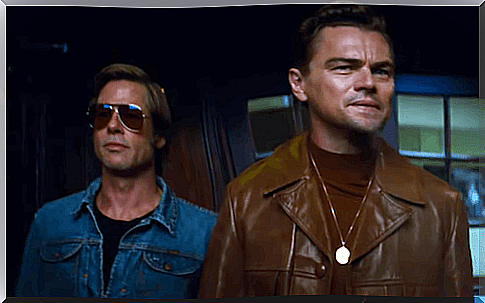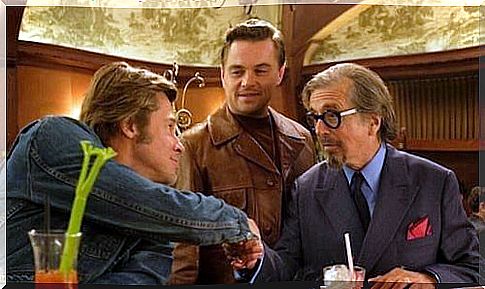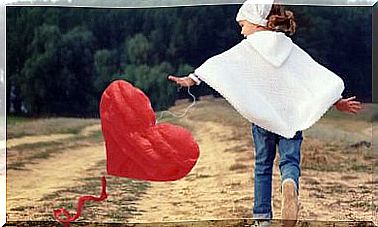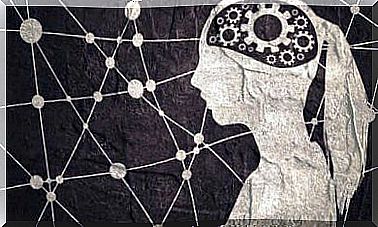Once Upon A Time In Hollywood: Tarantino’s Latest Film

Tarantino did it again! In a fast-paced, fast-paced world, he managed to get a lot of people to stay in the cinema for about three hours, without talking and without checking their phones, just for the sake of watching a movie. And that’s exactly what made us live, CINEMA, in capital letters. A pure love for the seventh art with all the references that the director likes. Once Upon a Time in Hollywood is the latest film by the director who for decades has amazed us with bloodshed and captivating stories leaving their mark on the collective imagination.
And when an artist, of any kind, does what he really feels, the results are visible. Tarantino has on his side an audience that has eagerly awaited his latest feature film and the money that allows him to make the film productions he wants.
Regardless of whether they’re trendy, Tarantino uses what his influences have been, immerses himself in his fetishes, and provides us with a rewrite of history. It reinterprets what has been, and could have been, through a form of entertainment that we could define as absolute.
Once upon a time in Hollywood shows us that not all productions are the same, that commercial cinema is not all the same and that there are still those who are willing to sit for hours in a cinema and let themselves be carried away by emotions.
It seems that the film is destined for no one in particular but itself, and this is the key to its success. A party in which the cake is awaited until the end.
Once upon a time in Hollywood intertextuality
Tarantino learned cinema by watching cinema. He fed on both the best and the least popular films, or even the scraps of the seventh art. And this is precisely what he wants to convey to the public, the possibility of finding art even in lesser known and appreciated productions.
He made it clear from the beginning that everything he likes is present in his cinema, from music to cinephile references, passing through his fetishes.
By watching Tarantino’s film we can learn a lot about cinema. We can rediscover the influences of the old spaghetti westerns that are out of fashion today, immerse ourselves in kung fu and even discover authentic pearls that the most commercial cinema wanted to hide from us.
Art goes beyond fashions, impositions or politics. Art must be valued as art in itself. If a director we like offers us a film, directly or indirectly, we must give him a chance.
When we saw the Once Upon a Time in Hollywood trailer , we were amazed. We know what the director likes, we know his filmography and, however, we weren’t quite sure what to expect.
Would you like to tell us about Charles Manson and the murders committed by the “family”? Do you want to pay homage to those old glories of American westerns who went to Europe in search of better roles? Maybe a little bit of all of this.
In Once Upon a Time in Hollywood there are many quotes and it is almost impossible to recognize them all. However, this allows us to step out of the cinema and discuss with our friends about the intertextual elements that we have been able to recognize and identify. We all grow up with a cultural heritage and are more or less predisposed to grasp certain messages.
According to this tendency to constant quotations, even the title refers us to a director whom Tarantino deeply admires. In fact, he has never hidden his love for Sergio Leone’s cinema.
Leone directed two stories with a similar title to the one we talk about today. Once upon a time in the West , which was his last spaghetti western (also known as twilight westerns) and Once upon a time in America , which will become the great American experience of the Italian director, the long film that the United States they failed to appreciate.
The nostalgic element is evident from the very first sequences. That idealized Hollywood ends up becoming an inhospitable environment in which actors have to accept what is offered to them when they reach a certain age. A grotesque fairytale, unlikely and real at the same time, which ends up showing us the most bitter face of the film industry.
All against the backdrop of a notorious tragic event: the murder of Sharon Tate. The actress is presented as a young woman full of life enjoying herself in the audience while smiling at one of her films.
We, the spectators, know her tragic fate and, inevitably, we sympathize and empathize with her. The same happens with another character, the actor, who could be Clint Eastwood, who suffers the consequences of maturity and an industry that wanted to stereotype him without giving him the opportunity to shine.
Nostalgia emerges from every corner of the screen, the memory of a glorious era, but full of hardness, mixes with Tarantino’s reveries. Through his vision he “tells us what could have happened”. And there is no lack of irony, nor the violent scenes characteristic of his cinema: a pathetic violence, beautiful and amusing at the same time.
At times it seems to see two films at the same time. Two truths or two lies that end up intertwining with a surprising and laughable, but also disturbing ending.

Once upon a time in Hollywood, the story of Tarantino
ATTENTION: as of this moment, the article may contain spoilers
Tarantino tells us the story of old Hollywood, a place where dreams come true, but where they can also easily vanish. The story of real characters is mixed with that of fictional characters, although the latter may seem real.
Indeed Once upon a time in Hollywood plays with our knowledge of that era, it makes us enter the streets full of cars of the past and introduces us to the girls of Charles Manson’s “family” through an easily recognizable song: I ‘ ll never say never to always.
But are we really convinced that we are seeing Sharon Tate’s tragic end in a Tarantino film? No, definitely not. It is not the kind of violence that the American director likes. It is not the “aesthetic and funny” violence animated by the music to which we have become accustomed.
Although Sharon Tate is not one of the main characters in the film, the director plays with blocking and editing so that our attention is always on her. For example, he dresses her in yellow at a big party and uses the camera so that our attention is focused on the young woman, pushing us to empathize with her and get to know her without using too many words.
And so, we get to know Sharon through her way of interacting with her surroundings and the opinions of other characters. Does Tarantino want to introduce the character to us in a touching way and then show us his horrible end? Of course not! If we pay attention, it reveals the ending right from the start.
Thanks to a scene that recalls one of his previous films , Inglourious Basterds , viewers can anticipate the end without too much difficulty. What are we referring to? He rewrote history by telling us a mysterious episode from the past that ends with the killing of Adolf Hitler.
That initial reference ties in directly with what we’ll see in Once Upon a Time in Hollywood . In this case, however, we will not be confronted with a raw, tragic and painful violence, but we will find a “funny” violence, a bath of blood, flames and action.
The two apparently distant stories intertwine with each other through an eclectic ending. Constant quotes, meticulous attention to detail, everything is possible in Tarantino’s cinema. Once upon a time in Hollywood becomes a tribute to cinema, a hymn to the seventh art and a demonstration of the director’s ability to tell stories, satire on life, laugh about everything and have fun.
The bloodbath is waiting for us, but it is presented to us as a catharsis, as a liberation for our conscience, as a “that was the way it was supposed to go …”.








